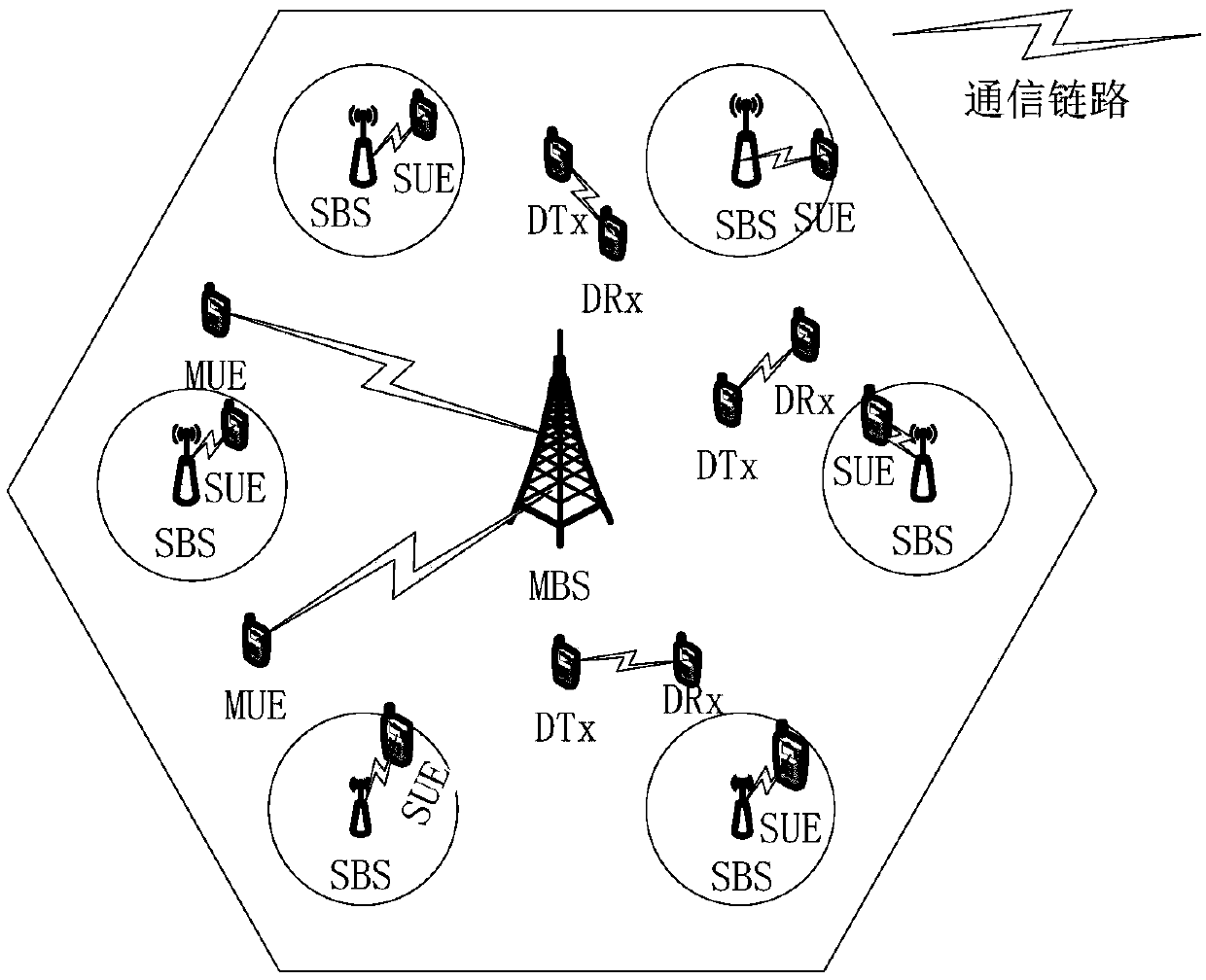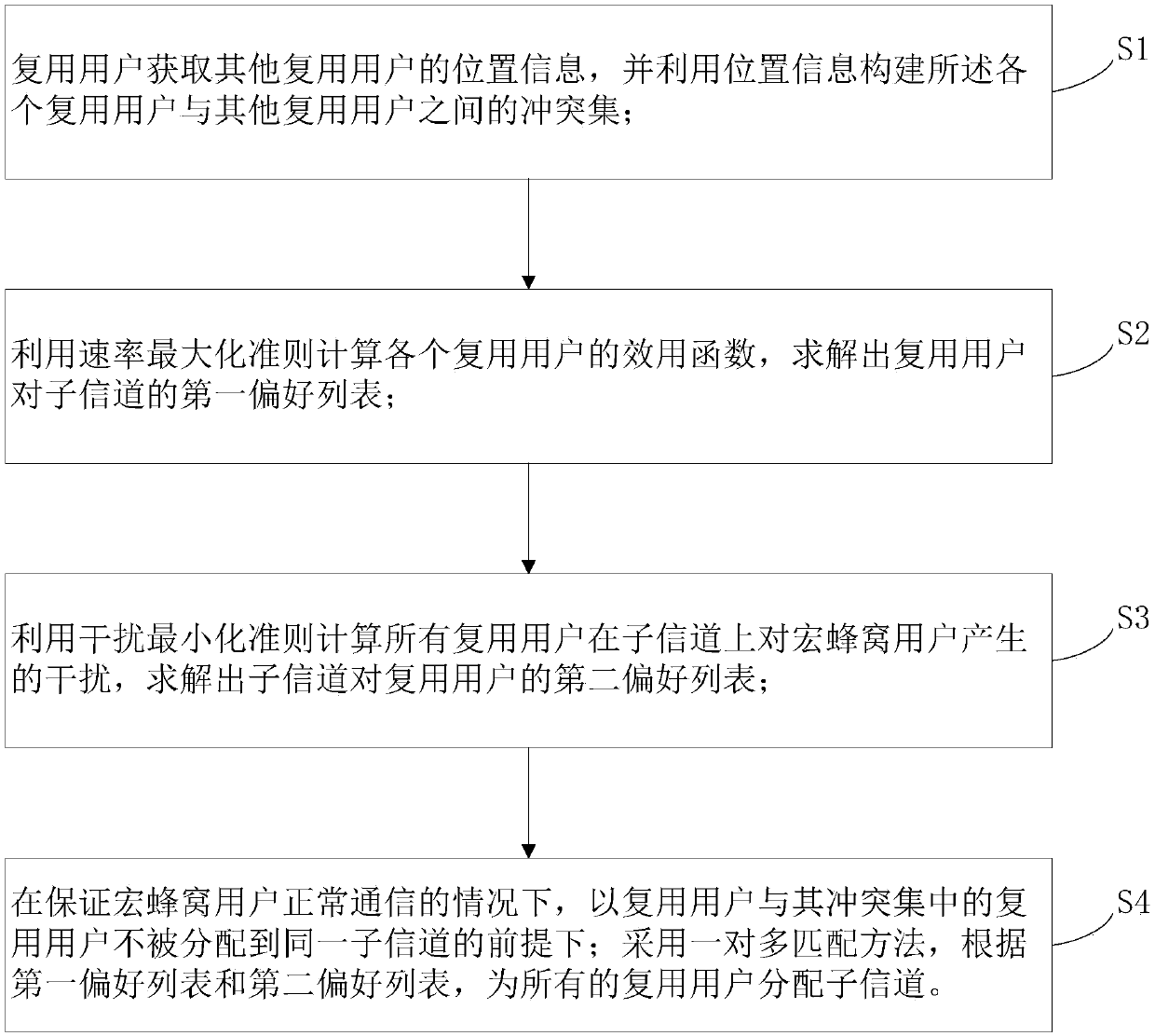Resource allocation method based on one-to-many matching in heterogeneous network
A resource allocation, multi-matching technology, applied in location-based services, machine-to-machine/machine-type communication services, advanced technologies, etc., can solve problems such as less consideration of macro-cell user spectrum resource interference management issues, and achieve improved Spectral efficiency and system throughput, reducing computational complexity, and reducing the effect of same-layer interference
- Summary
- Abstract
- Description
- Claims
- Application Information
AI Technical Summary
Problems solved by technology
Method used
Image
Examples
Embodiment approach
[0065] S411. Judging the current matching status of sub-channel n and multiplexing user k, if sub-channel n and multiplexing user k are currently in an unmatched state, and the first preference list of multiplexing user k in the t-th round of matching If not empty, execute step S421;
[0066] S421. If the multiplexing user k causes interference to the macro cell user on the sub-channel n greater than interference margin Then execute step S431, if Then execute step S441;
[0067] S431. For the multiplexing users whose sub-channel n has been matched at present, find the multiplexing users whose priority is lower than the multiplexing user k in the second preference list from the sub-channel n, and add these multiplexing users to the set sequentially from Delete the multiplexing user with the lowest priority, and update the interference margin of the current subchannel n until Execute step S441; if All reused users of are deleted, and Then subchannel n rejects t...
PUM
 Login to View More
Login to View More Abstract
Description
Claims
Application Information
 Login to View More
Login to View More - R&D
- Intellectual Property
- Life Sciences
- Materials
- Tech Scout
- Unparalleled Data Quality
- Higher Quality Content
- 60% Fewer Hallucinations
Browse by: Latest US Patents, China's latest patents, Technical Efficacy Thesaurus, Application Domain, Technology Topic, Popular Technical Reports.
© 2025 PatSnap. All rights reserved.Legal|Privacy policy|Modern Slavery Act Transparency Statement|Sitemap|About US| Contact US: help@patsnap.com



